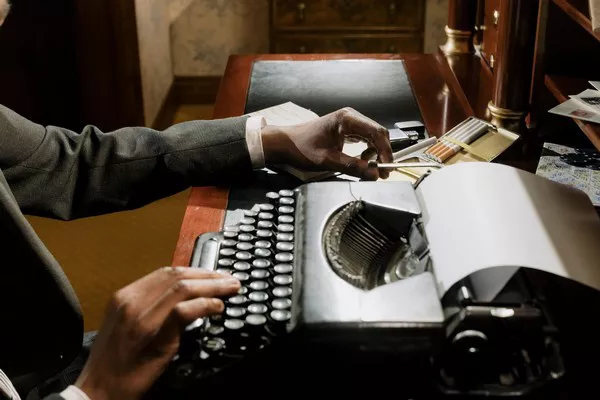Music is a timeless art form that transcends generations, cultures, and trends. Despite the constant evolution of musical styles and genres, old music continues to captivate audiences worldwide. Whether it’s the classical compositions of Mozart and Beethoven, the iconic rock anthems of the Beatles, or the soulful melodies of Motown, the enduring popularity of vintage music raises an intriguing question: Why is old music still popular?
Nostalgia and Emotional Connection
One of the primary reasons why old music maintains its popularity is its ability to evoke nostalgia and foster an emotional connection with listeners. Music has a profound impact on memories and emotions, often serving as a time machine that transports individuals back to specific moments in their lives. Songs from the past trigger reminiscences of cherished experiences, first loves, or significant life events. The melodies, lyrics, and rhythms of old tunes are intertwined with personal memories, creating a deep emotional bond that withstands the test of time.
Timeless Quality and Musical Craftsmanship
Old music endures because of its timeless quality and exceptional craftsmanship. Many classic songs were meticulously composed, arranged, and performed, showcasing unparalleled musical talent and innovation. Whether it’s the intricate orchestral arrangements of classical compositions or the groundbreaking experimentation of early rock ‘n’ roll, these songs were crafted with precision and artistry. The enduring appeal of old music lies in its ability to showcase the mastery of musicianship and songwriting that transcends generations.
Cultural Significance and Historical Context
Old music often holds significant cultural and historical value, reflecting the zeitgeist of a particular era. Songs serve as a sonic time capsule, preserving the societal norms, values, and struggles of bygone times. They provide insights into the social movements, political climates, and cultural revolutions that shaped history. For instance, protest songs from the 1960s encapsulated the spirit of activism during the civil rights movement and the Vietnam War era, resonating with audiences then and continuing to do so now. This historical context imbues old music with a sense of relevance and significance, ensuring its lasting popularity.
Influence on Contemporary Music
Another reason for the enduring popularity of old music is its influence on contemporary musical trends. Many current artists draw inspiration from past genres, styles, and musicians. Elements of older music can be heard in modern compositions, whether it’s the incorporation of vintage sounds in pop music or the sampling of classic tracks in hip-hop and electronic music. By paying homage to the musical heritage of the past, contemporary artists keep the spirit of old music alive, ensuring its relevance in today’s music landscape.
Time-Tested Quality and Enduring Appeal
The enduring appeal of old music can also be attributed to its time-tested quality. Some songs possess an inexplicable allure that transcends the limitations of time and genre. The melodies, lyrics, and performances resonate with listeners across generations, captivating new audiences even decades after their initial release. The enduring popularity of classics like “Bohemian Rhapsody” by Queen or “Imagine” by John Lennon highlights the universal appeal and enduring quality of these timeless compositions.
Escapism and Avoidance of Disposable Trends
In a world characterized by rapid changes and fleeting trends, old music provides a sense of escapism and a refuge from disposable pop culture. While contemporary music often revolves around short-lived fads, old songs offer a sense of stability and familiarity. They represent a departure from the transient nature of modern culture, allowing listeners to immerse themselves in melodies that have stood the test of time, offering a sense of comfort and reassurance.
Accessibility and Digital Revival
The accessibility of old music in the digital age has played a pivotal role in its continued popularity. Online streaming platforms and digital archives have made vintage songs easily accessible to new audiences. Platforms like Spotify, Apple Music, and YouTube enable listeners to explore and rediscover classic tracks with unparalleled convenience. This digital revival has introduced old music to younger generations who might not have been exposed to it otherwise, contributing to its sustained relevance.
Crossover Appeal and Multigenerational Audience
Old music possesses a unique ability to appeal to multiple generations simultaneously. While older listeners cherish these songs for their sentimental value and nostalgia, younger audiences are drawn to the authenticity, storytelling, and musicality of vintage tracks. The shared love for timeless classics creates a bridge between generations, fostering shared musical experiences within families and communities. This crossover appeal ensures that old music remains a cultural phenomenon embraced by diverse age groups.
Conclusion
In conclusion, the enduring popularity of old music stems from its ability to evoke nostalgia, its timeless quality, cultural significance, influence on contemporary music, time-tested appeal, escapism from disposable trends, digital accessibility, and multigenerational appeal. As long as these songs continue to resonate with audiences on emotional, cultural, and artistic levels, their popularity will endure, ensuring that the melodies of the past remain a cherished part of our musical landscape for generations to come.

























